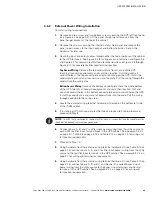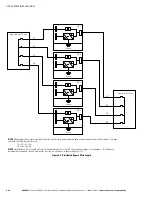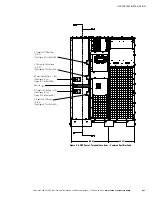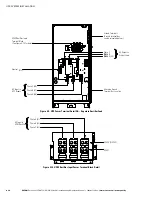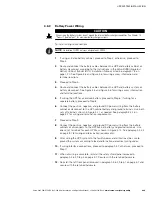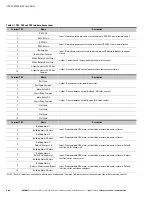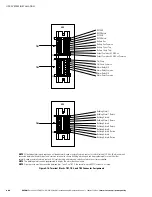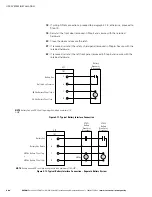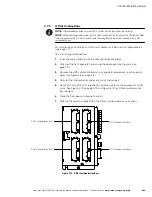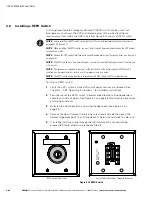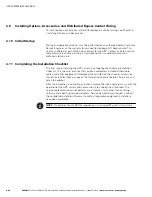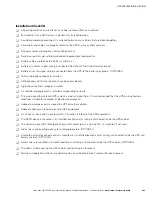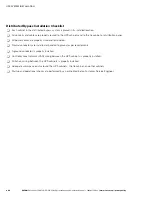
UPS SYSTEM INSTALLATION
EATON
Eaton 9395 550/275 UPS (225–550 kVA) Installation and Operation Manual
S
164201716 Rev 2
www.eaton.com/powerquality
4-20
Table 4‐1. TB1, TB2, and TB3 Interface Connections
Terminal TB1
Name
Description
1
REPO NC
I
nput: Normally‐closed dry contact used to activate UPS EPO from a remote switch.
2
REPO Return
3
REPO NO
I
nput: Normally‐open dry contact used to activate UPS EPO from a remote switch.
4
REPO Return
5
Battery Aux
Input: Normally‐open contact used to indicate when UPS battery breaker is open or
closed.
6
Battery Aux Common
7
48 Vdc Battery Shunt Trip +
Output: Contacts used to open battery breaker or disconnect.
8
48 Vdc Battery Shunt Trip –
9
Output Contactor K3 NC Aux
Output: Normally‐closed contact opens when output contactor closes.
10
Output Contactor K3 NC Aux
Common
Terminal TB2
Name
Description
1
Pull Chain
Output: Backup control for parallel operation.
2
Pull Chain Common
3
Alarm Relay NC
Output: General purpose normally-closed (NC) relay contact.
4
Alarm Relay Common
5
Alarm Relay NO
Output: General purpose normally-open (NO) relay contact.
6
Alarm Relay Common
7
Not Used
8
Not Used
9
Not Used
10
Not Used
Terminal TB3
Name
Description
1
Building Alarm 1
Input: Programmable UPS alarm, activated by a remote dry contact closure.
2
Building Alarm 1 Return
3
Building Alarm 2
Input: Programmable UPS alarm, activated by a remote dry contact closure.
4
Building Alarm 2 Return
5
Building Alarm 3
Default: Charger Off
Input: Programmable UPS alarm, activated by a remote dry contact closure. Default
function set for charger off.
6
Building Alarm 3 Return
7
Building Alarm 4
Default: On Generator
Input: Programmable UPS alarm, activated by a remote dry contact closure. Default
function set for on generator.
8
Building Alarm 4 Return
9
Building Alarm 5
Default: Maintenance Bypass
Input: Programmable UPS alarm, activated by a remote dry contact closure. Default
function set for maintenance bypass.
10
Building Alarm 5 Return
NOTE
“Return“ indicates connection to electronics circuit ground. “Common” indicates connection to common side of isolated relay contact.


